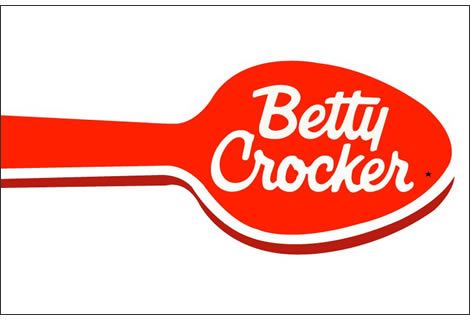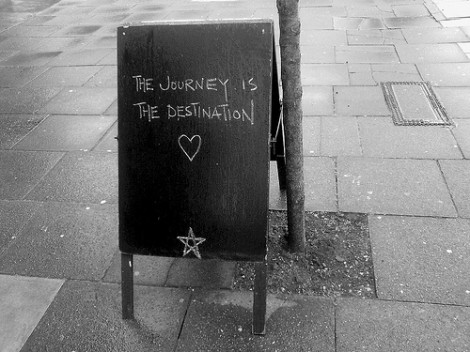
I’ve always liked this story about Betty Crocker and how General Mills took such care in designing the experience of making a cake. They’d been espousing speed and ease in the kitchen since 1931 with products like Bisquick, but this story originates from a cake mix they launched in 1952, almost 2 decades later.
To quote from Finding Betty Crocker by Susan Marks:
“At this time, the company was still refining their approach to marketing. While they sought to promote a quick and easy product that still retained a “fresh, ‘home-made'” quality, ‘the market was slow to mature’ (p. 168). The company called upon the market research of Dr. Burleigh Gardner and Dr. Ernet Dichter, both business psychologists:
‘The problem, according to psychologists, was eggs. Dichter, in particular, believed that powdered eggs, often used in cake mixes, should be left out, so women could add a few fresh eggs into the batter, giving them a sense of creative contribution.’
As a result, General Mills (who own Betty Crocker) altered their product, abandoning the powdered egg in their mixes. The requirement to add eggs at home was marketed as a benefit, conferring the quality of ‘home-made’ authenticity upon the box cake mix. (Whether using fresh eggs instead of powdered eggs actually enhanced taste was beside the point.)”
I like this story because it nicely sums up the progression in thinking from ‘just designing for ease and speed’ (old-school usability) to ‘designing an entire experience’ (new-school experience design).
Old-school Usability espouses the idea that user activities are onerous tasks that they want to get out of the way as soon as possible. While this is true in some cases, usability is now widely understood to be more of a hygiene factor – something that can cause dissatisfaction if missing, but its presence cannot take you beyond lack of dissatisfaction.
By now you’re probably thinking “Yeah, I get it already – usability is just one of the components of good design”. So let’s move on to my second point. In the Betty Crocker example, the psychologists realized the customer wanted to play the role of a successful home-maker and cook. We could even go so far to argue that their customers may have felt societal pressures to perform this role well. The egg, therefore, becomes more than an ingredient, and more than just an extra pleasurable step. It becomes a prop, enabling the customer to play a social role. Goffman’s theory of Dramaturgy explains this to some extent. It’s worth reading about if you don’t have much background in Social Psychology or Sociology.
Now, I’m not saying that knowing a bit of sociology is going to make you into a great designer. However, it does give you a nice underpinning perspective for when you carry out field research.

Interesting point, Harry. The role-playing point also brings to mind James Gee’s explanation of projected identity in video games. The egg helps bridge the gap between someone’s real identity and the virtual identity – which is why it’s such a design success.
As a lifelong Betty Crocker fan, I have admit I’ve thought the same thing about their products, although never in such a considered sociological way. I do feel like you’re actually making some semblance of home-made food and what’s more by being given that little bit of freedom I also feel I have more license to experiment or add extras. I end up feeling a bit like Nigella Lawson and less like a busy professional who can’t be bothered to bake from scratch. Anyway, very nice, tangible and delicious example of how to successfully design for ease around an experience rather than the other way around.
I love the points that you draw from this story, but I’m rather skeptical about the story itself. There’s no doubt that this is the official story as told by Betty Crocker, but I think they’re not telling the whole truth.
When’s the last time a product manager or company ever had the intellectual integrity and, well, balls, simply to say: “you know what guys, our product just wasn’t good enough.”
Is it that hard to conceive that a cake made with fresh eggs might taste significantly better than one made from powdered eggs? And if that was the case, would the product managers over at good ol’ Betty Crocker have simply admitted that: “We need to figure out a way to make our cake mixes produce a better taking, fresher cake.” Or might they have been tempted to pass of the failure of their crappy-tasting product onto the vagaries of the consumer?
While I love how this story gets one to think about the “dramaturgical” appeal of a product, I think the psychological explanation for what happened with Betty Crocker’s cake mix to be sketchy at best.
– Jeff
I’m inclined to agree to an extent- fresh eggs *are* going to taste better than powdered eggs. The idea that the improvement in taste was “beside the point” probably isn’t true. I think they took out the eggs both for taste reasons and because it gives the customers a nice illusion of mastery and creativity when they are making their cakes.
The story of the egg is told quite differently by Adam Curtis in ‘The Century of The Self’. Edward Bernays, the nephew if Sigmund Freud, was instrumental in bringing manipulation of unconscious desires into the commercial world.
Its a long but enlightening documentary about a hidden architect of the modern world, highly recommended:
http://is.gd/4u8a8
This story is a great example of what one may call post optimal usability.
In 2008 I completed a project exploring how tools and perspectives of ‘dramaturgy’ and theatre frameworks can possibly contribute to the design of meaningful products, and the narratives that unfold around their use.
My thesis may make for an interesting read for anyone interested in further exploring dramaturgy in product design, and can be found at:
http://www.coda.ac.nz/unitec_design_di/4
Pingback: DesignNotes by Michael Surtees » Blog Archive » Link Drop from October 26th to October 29th 2009
Pingback: “Just add an egg†– Usability, User Experience and Dramaturgy | UX Booth
Pingback: User eXperience (UX) Digest #4 « Chasing the Dream
Pingback: Interact Seattle » Blog Archive » User eXperience (UX) Digest #4
This story was in Design of Everyday Things almost 20 years ago. Is that where you got it?
Hi Jethro, thanks for the pointer – I wasn’t aware Don Norman referred to it in that book – which chapter? I’d love to know what he had to say about it back in the 80s. A quick Google of don norman + betty crocker turns up this recent article by Don in which he mentions it. To quote: “Adding an egg to a mix that didn’t really need one makes use of the clever psychology, but it is not what I call being truly creative. The cake mix, with egg or without, is mindless. Read the instructions and follow them: everyone’s mix produces the same result”.
Pingback: Gluue - A blog about work, life, and internet apps. By Paste Interactive
Pingback: Some links for light reading (16/03/10) | Max Design
Pingback: Our Bookmarks: Oct 19 - Oct 25, 2009